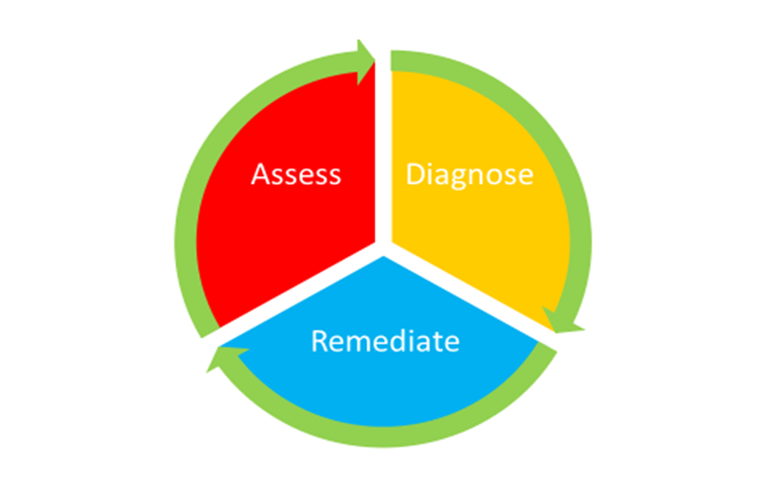The 3 key elements of assessment for learning
Editor’s Note:
This is an updated version of a blog post originally published on July 8th, 2019
Looking to improve assessment in your classroom? Embedding Assessment for Learning into your practice is easier than it sounds. The process is simple — assess, diagnose, and remediate.
Assessment for Learning
Assessment for Learning (AfL), otherwise known as formative assessment, happens during teaching and learning to help clarify children’s understanding of maths. It gives teachers insights into their pupils’ learning and their own teaching practice. It also empowers pupils to take charge of their own learning.
The goal of Assessment for Learning is to find out if a child has achieved the learning objective and if a struggling pupil is able to complete part of the task.
So, how can you improve assessment for learning in the classroom? And how do you assess learning in the classroom? Firstly, ‘runway indicators’ can help to classify pupils understanding.
- On the runway: the learner cannot do the task, but has the prerequisite skills needed.
- On target: the learner can complete the task independently by working through the problem.
- Flying at cruising altitude: the learner can easily complete the task.
The three key elements
If you find yourself asking the question: what are Assessment for Learning strategies? Start simple. There are three key elements: assess, diagnose and remediate.

But it shouldn’t stop there. The three key elements are cyclical. After completing the last remediation step, you can assess the pupil again to determine if they have understood the concept.
If you’re not sure how to put the three elements of Assessment for Learning into practice, here are some tips to help get you started.
Boost Your Practice with FREE CPD
Receive a CPD boost every time you refer a school! Both you and the referred school will earn a full day of CPD and 2 free places on our 3-day Essentials of Teaching Maths Mastery course (valued at £1700).
Get started on helping struggling schools reach maths success now!

1. Assess
Try using Every Pupil Response (EPR) techniques where every pupil shows their answer immediately.
ERP techniques allow you to:
- Identify misconceptions.
- Determine if pupils can move on to the next part of the lesson.
- See if any pupil needs help.
- Conduct remediation.
- Decide if re-teaching is necessary.
A simple ERP technique is to use mini-whiteboards to give you instant feedback on your pupils’ understanding. Make sure that you question the children on their methods. When pupils know that they are expected to explain their responses, they’ll be less likely to copy each other’s answers.
2. Diagnose
If a pupil has answered a question incorrectly then how can you tell if it’s due to carelessness, a simple mistake, or a real misconception?
Following these steps can help you to diagnose the root cause of an incorrect answer:
- Find the basic facts answered incorrectly.
- Determine if the same basic facts appear more than once. If they were answered incorrectly then there could be a real misconception.
- Determine if the pupil sometimes answered correctly and sometimes incorrectly. The incorrect answers could be due to sloppy work habits (if there are more wrong answers towards the later part of the worksheet) or it could be a real misconception.
- Try to understand the pattern of reasoning used by the pupil.
3. Remediate
To remediate effectively, you’ll need to carry out some form of task analysis.
- Start by breaking down the problem into smaller sub-tasks.
- Then identify the skills required to complete each sub-task.
- Zero-in on where a pupil’s misconceptions lie so that you can remediate effectively.
After remediation, it may help your pupils to demonstrate their understanding by asking them to write a reflection journal. The journal could also serve as a ‘graduation’ from the remediation, so the pupil knows that he no longer needs remediation on this topic.
Assessment for Learning is all about helping pupils learn better. When using the three key elements of Assessment for Learning continuously, you’ll better support your pupils and help them progress.
Learn more
Why Assessment for Learning is essential for successful maths teaching
Other Maths — No Problem! Assessment blogs
In this video Dr Yeap Ban Har explains how to use formative assessment during the three parts of a Singapore maths lesson
